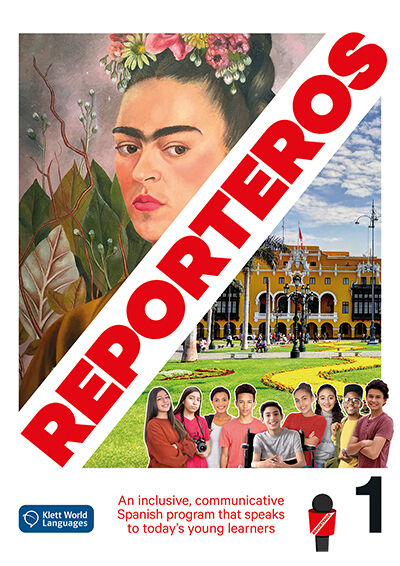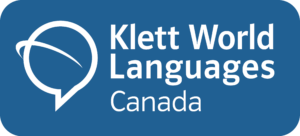Introduction
In this case study, see how REPORTEROS helped Aubrey Swisher overcome engagement challenges, connect students to authentic Hispanophone culture, and improve their language proficiency.

Aubrey Swisher has been a Spanish teacher at Boonsboro High School for 13 years after completing her first two years of teaching at Springfield Middle School. Aubrey is a passionate advocate for diversity and strives to give her students a global perspective and compassion. By incorporating cultural contexts and real-world examples, Aubrey enriches her students’ understanding of the Spanish language and culture. Her approach includes experiential learning and authentic language opportunities. Aubrey adopted the Reporteros program because it uses a communicative approach with real-world projects, offers authentic and engaging content, and helps students explore global equity by encountering diverse identities and communities.
Aubrey has been using REPORTEROS for two years.

Boonsboro High School is a rural public school in Boonsboro, Maryland, with 747 students. The school is dedicated to providing each student with the knowledge and skills to be life-long learners, equipped to lead lives of choice, opportunity, purpose, and consequence. The Spanish program at Boonsboro High School aims to develop students’ communicative competence and intercultural understanding while increasing the number of recipients of the State and Global Seals of Biliteracy to promote bilingualism, enhance students competitiveness in the global market, and demonstrate the school’s commitment to cultivating language proficiency and cultural awareness.
The Challenge
Traditional Textbooks and Disengaged Students
Before adopting Reporteros, Spanish teacher Aubrey Swisher faced significant challenges with the traditional textbooks used in her courses. The previous textbook heavily emphasized memorization and grammar drills in a “traditional” or “grammar-translation approach.” This approach prioritized linguistic accuracy over practical language use and often led to disengagement and a lack of motivation among students.
“Students were introduced to vocabulary and grammar in a very isolated way,” she explains. “They would just get a page of notes followed by activities that were very formulaic. This didn’t give them the opportunity to engage with the language in authentic ways, which is essential for developing real communication skills.”
Outdated and Unrelatable Content
The content in the old textbooks needed to be updated and resonate with students. The cultural references, images, and examples felt disconnected from current realities in Spanish-speaking countries, making it hard for students to relate to the material.
“Everything felt so scripted and out of touch,” she recalls. “The videos featured actors speaking slowly with exaggerated enunciation, and cultural context was limited to small, infrequent boxes. This made it difficult for students to see the relevance of their learning. And my students had to rely on me to bring any authentic materials to the lessons; if I didn’t have the chance to find something that fit a day’s lesson, I knew that students wouldn’t be engaging with authentic resources that day…and that felt wrong.”
Limited Practical Application
The previous materials needed more opportunities for students to practice real-life communication. The activities often included filling in blanks or matching responses, which did not encourage independent language use or meaningful interaction.
“Students were not being prepared to use Spanish outside the classroom” Aubrey says. “They were learning a set list of vocabulary and grammar rules but weren’t developing the skills they needed to navigate real-world situations. Practical language learning isn’t isolated from cultural or conversational settings – it’s embedded in it.”
Impact on Learning Outcomes
The result of these challenges was clear: students needed to be more engaged and motivated, which affected their learning outcomes. They often described the previous textbooks as “outdated, basic, and boring” and found the activities too easy and uninspiring.

"With our previous textbook, students were introduced to vocabulary and grammar in a very isolated way. They would just get a page of notes followed by activities that were very formulaic. This didn’t give them the opportunity to engage with the language in authentic ways, which is essential for developing real communication skills."
AUBREY SWISHER
The Solution
A New Approach with REPORTEROS
Implementing REPORTEROS transformed the learning experience for both Aubrey Swisher and her students. The program’s hands-on, project-based approach immersed students in cultural contexts and real-world scenarios, which made learning more engaging and effective.
“REPORTEROS is a breath of fresh air,” Aubrey enthuses. “It uses a variety of authors who are still in the classroom, so the activities are diverse and cater to different learning styles. It’s not monotonous or predictable, which keeps students interested.”
Culturally Rich and Relevant
One of the standout features of REPORTEROS is its focus on cultural immersion. Each unit explores different Spanish-speaking cultures, allowing students to make meaningful cultural comparisons. This approach resonates with students, especially those of Hispanic heritage.
“Students love seeing their cultures represented,” she shares. “There’s even a unit on the United States as a target culture, which helps all students see the relevance of what they’re learning. It really brings the language to life.”
Project-Based Learning for Real-World Skills
The project-based methodology of REPORTEROS engages students in tasks that mirror real-life challenges. Whether they’re designing a business proposal, writing a letter of interest, or creating a video resume, students are applying their language skills in practical, hands-on ways.
“Students are no longer just passively absorbing information,” Aubrey explains. “They are actively collaborating, problem-solving, and creating projects. This not only makes learning more enjoyable, but also helps them develop skills they’ll need in the future.”
Increased Engagement and Better Outcomes
Since adopting REPORTEROS, Aubrey Swisher has observed a noticeable increase in student engagement and performance. The culturally rich content and authentic materials have made Spanish class more meaningful and exciting for students.
“Students are now more interested and invested in their learning,” she notes. “They’re not just doing repetitive exercises; they’re developing communication skills and cultural awareness. It’s amazing to see their confidence grow.”
Feedback and Student Success
Feedback from students has been overwhelmingly positive. They particularly appreciate the cultural comparisons and the focus on real-world applications.
“One of my students said that Spanish class finally feels real to them,” Aubrey shares. “They’re excited to learn about different cultures and see how they can use Spanish in their lives. The project-based approach has truly empowered them to take ownership of their learning.”
By switching to REPORTEROS, Aubrey Swisher was able to address the limitations of traditional textbooks and provide her students with a dynamic, engaging learning experience. The program’s emphasis on culture, real-world tasks, and project-based learning has not only improved student engagement but also better prepared them for life outside the classroom.

